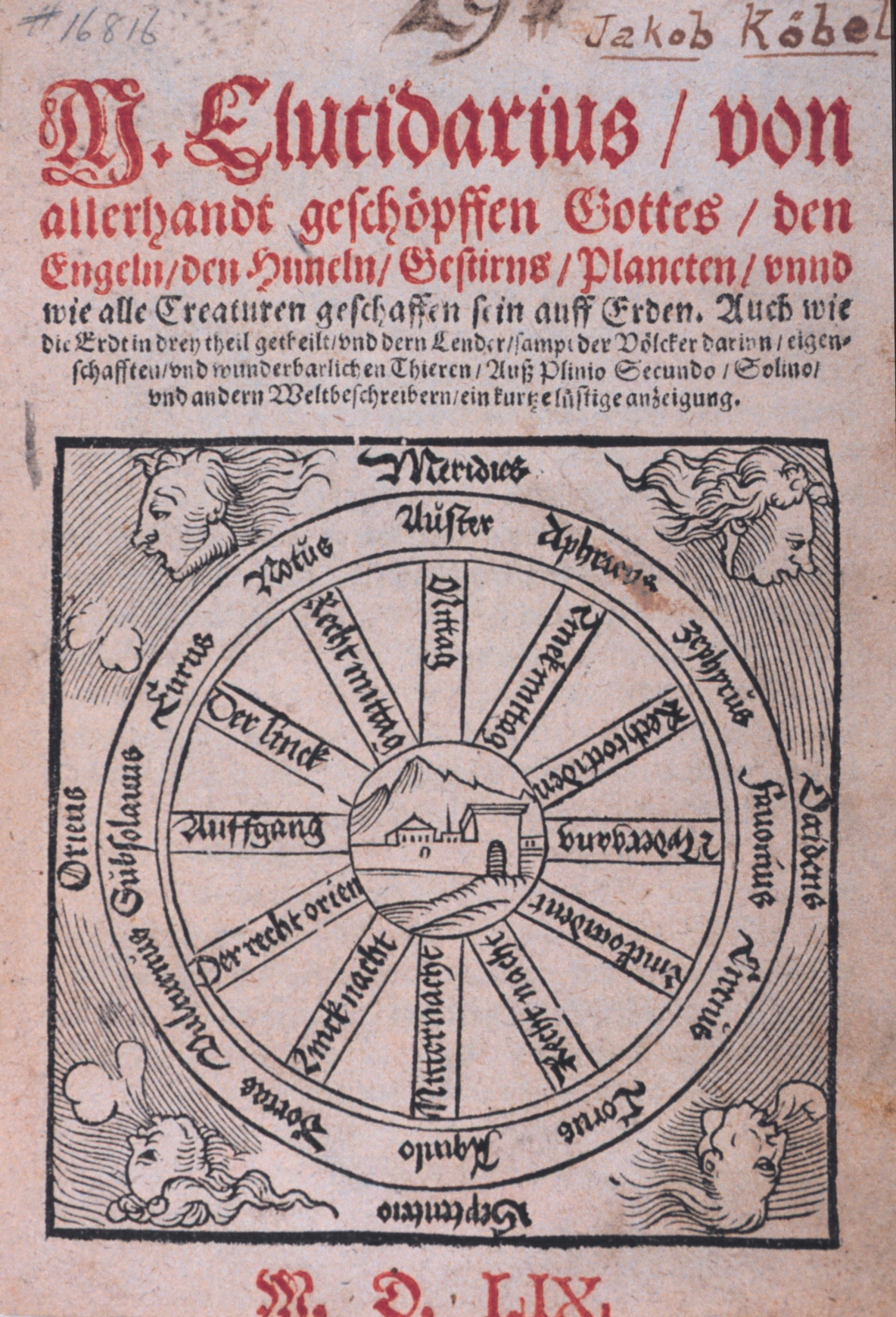|
Dökkálfar And Ljósálfar
In Norse mythology, Dökkálfar ("Dark Elves") and Ljósálfar ("Light Elves") are two contrasting types of elves; the dark elves dwell within the earth and have a dark complexion, while the light elves live in Álfheimr, and are "fairer than the sun to look at". The Ljósálfar and the Dökkálfar are attested in the ''Prose Edda'', written in the 13th century by Snorri Sturluson, and in the late Old Norse poem ''Hrafnagaldr Óðins''. Scholars have produced theories about the origin and implications of the dualistic concept. Attestations ''Prose Edda'' In the ''Prose Edda'', the Dökkálfar and the Ljósálfar are attested in chapter 17 of the book ''Gylfaginning''. In the chapter, Gangleri (the king Gylfi in disguise) asks the enthroned figure of High what other "chief centres" there are in the heavens outside of the spring Urðarbrunnr. Gangleri responds that there are many fine places in heaven, including a place called Álfheimr (Old Norse 'Elf Home' or 'Elf World'). High s ... [...More Info...] [...Related Items...] OR: [Wikipedia] [Google] [Baidu] |
Galdr
A (plural ') or (plural ) refers to a spell or incantation in Old Norse and Old English respectively; these were usually performed in combination with certain rites.The article ''Galder'' in ''Nationalencyklopedin'' (1992) Etymology non, galdr and ang, ġealdor or ' are derived from the reconstructed Proto-Germanic ''*galdraz'', meaning a song or incantation. The terms are also related by the removal of an Indo-European ''-tro'' suffix to the verbs non, gala and ang, galan, both derived from Proto-Germanic ''*galaną'', meaning to sing or cast a spell. In Old High German the ' suffix produced ' instead. The German forms were Old High German ' and MHG ' "song, enchantment" (Konrad von Ammenhausen ''Schachzabelbuch'' 167b), surviving in (obsolete or dialectal) Modern German ' (witchcraft) and ' (witch). From these terms are descended words such as the Icelandic verb ' "to sing, call out, yell", enm, galder "magic" and as a component of ''nightingale'' (from '), rela ... [...More Info...] [...Related Items...] OR: [Wikipedia] [Google] [Baidu] |
Svartálfar
In Norse cosmology, svartálfar ( O.N. "black elves", "swarthy elves", sing. svartálfr), also called myrkálfar ("dark elves", "dusky elves", "murky elves", sing. myrkálfr), are beings who dwell in Svartalfheim (''Svartálf eimr'', "home of the black-elves"). Both the svartálfar and Svartálfaheimr are primarily attested in the ''Prose Edda'', written in the 13th century by Snorri Sturluson. Scholars have noted that the svartálfar appear to be synonymous with the dwarfs and potentially also the dökkálfar ("dark elves"). As dwarfs, the home of the svartálfar could possibly be another description for ''Niðavellir'' ("dark fields"). Attestations The ''svartálfar'' are almost only attested in the ''Prose Edda'' (the word does appear in ''Ektors saga ok kappa hans'', but is presumably borrowed from the ''Prose Edda''). The ''svartálfar'' mentioned in ''Skáldskaparmál'' 35 are the Sons of Ivaldi, whom Loki engages to craft replacement hair for Sif, wife of the god Thor, afte ... [...More Info...] [...Related Items...] OR: [Wikipedia] [Google] [Baidu] |
John Lindow
John Frederick Lindow (born July 23, 1946) is an American philologist who is Professor Emeritus of Old Norse and Folklore at University of California, Berkeley. He is a well known authority on Old Norse religion and literature. Biography John Lindow was born in Washington, D.C. on July 23, 1946, the son of Wesley Lindow and Eleanor Niemetta. His father was a banker and his mother was a teacher. John Lindow received his undergraduate degree at Harvard University, where he gained a A.B. magna cum laude in 1968, and a PhD in 1972, both in Germanic Languages and Literatures. After gaining his Ph.D, Lindow joined the faculty at University of California, Berkeley, serving as Acting Assistant Professor (1972-1974), Assistant Professor (1974-1977), Associate Professor (1977-1983), and Professor of Scandinavian (1983-?). He was since retired as Professor Emeritus of Old Norse and Folklore. In 1977, Lindow was elected as a corresponding member of the Royal Gustavus Adolphus Academy. In ... [...More Info...] [...Related Items...] OR: [Wikipedia] [Google] [Baidu] |
Dwarf (Germanic Mythology)
A dwarf () is a type of supernatural being in Germanic folklore, including mythology. Accounts of dwarfs vary significantly throughout history however they are commonly, but not exclusively, presented as living in mountains or stones and being skilled craftsmen. In early literary sources, only males are explicitly referred to as dwarfs, although they are described as having sisters and daughters, while both male and female dwarfs feature in later saga literature and folklore. Dwarfs are sometimes described as short, however, scholars have noted that this is neither explicit nor of relevance to their roles in the earliest sources. Dwarfs continue to feature in modern popular culture such as in the works of J.R.R. Tolkien and Terry Pratchett, where they are often, but not exclusively, presented as distinct from elves. Etymology The modern English noun ''dwarf'' descends from ang, dweorg. It has a variety of cognates in other Germanic languages, including non, dvergr and goh, tw ... [...More Info...] [...Related Items...] OR: [Wikipedia] [Google] [Baidu] |
Gabriel Turville-Petre
Edward Oswald Gabriel Turville-Petre (25 March 1908 – 17 February 1978) was an English philologist who specialized in Old Norse studies. Born at Bosworth Hall, Leicestershire to a prominent Roman Catholic family, Turville-Petre was educated in English at the University of Oxford under the tutelage of J. R. R. Tolkien. He eventually became Professor of Ancient Icelandic Literature and Antiquities at the University of Oxford and a leading member of the Viking Society for Northern Research. He was the husband of fellow philologist Joan Turville-Petre, who was a scholar of Anglo-Saxon and Old Norse studies at Oxford. Turville-Petre was the author of numerous works on Old Norse literature and religion which have remained influential up to the present day. Early life Gabriel Turville-Petre was born at his family's ancestral home of Bosworth Hall, Husbands Bosworth, Leicestershire on 25 March 1908. He was the youngest of the five children of Lieutenant-Colonel Oswald Henry P ... [...More Info...] [...Related Items...] OR: [Wikipedia] [Google] [Baidu] |
Rudolf Simek
Rudolf Simek (born 21 February 1954) is an Austrian philologist and religious studies scholar who is Professor and Chair of Ancient German studies, German and Scandinavian studies, Nordic Studies at the University of Bonn. Simek specializes in Germanic studies, and is the author of several notable works on Germanic paganism, Germanic religion and Germanic mythology, mythology (including Old Norse religion and Norse mythology, mythology), Germanic peoples, Vikings, Old Norse literature, and the culture of Medieval Europe. Biography Since 1995, Simek has been Professor and Chair of Ancient German and Nordic Studies at the University of Bonn. Simek was appointed Professor of Comparative Religion at the University of Tromsø in 1999, and Professor of Old Nordic Studies at the University of Sydney in 2000. Simek has held a number of visiting professorships, having had long research stays at the universities of Reykjavík University, Reykjavik, University of Copenhagen, Copenhagen, Lo ... [...More Info...] [...Related Items...] OR: [Wikipedia] [Google] [Baidu] |
Hjalmar Falk
Peterolsen Groth Hjalmar Seierstedt Falk (April 2, 1859 – November 2, 1928) was a Norwegian linguist and philologist. Early life and education Falk was born in Vang. He started his university studies in 1876 and graduated with an education degree in languages and history in 1882. After this he taught in Oslo while continuing research, especially on Germanic languages and Nordic mythology, including scholarship stays in Germany and England. Falk received the Crown Prince Gold Medal in 1885 and was appointed a |
Andi
Andi or ANDI may refer to: People and fictional characters * Andy (given name), including people and fictional characters with the name Andi * Andi people, an ethnic group of Dagestan, Russia Places * Andi, Guizhou, a town in Jinsha County, Guizhou, China * Andi, Shandong, a town in Yinan County, Shandong, China * Andi, Zhejiang, a town in Jinhua, Zhejiang, China * Andi, Estonia, a village in Lääne-Viru County * Andi, Republic of Dagestan, Russia, a rural locality Other uses * Andi language, the Northeast Caucasian language they speak *ANDi, a rhesus monkey *Aggregate Nutrient Density Index *American Nitrox Divers International American Nitrox Divers International (or ANDI) was founded by Ed Betts and Dick Rutkowski in 1988. ANDI has since expanded to include offices in The United Kingdom, Israel, Australia, Sweden, Italy, Germany, The Netherlands, Greece, Japan, Ta ... (Now ANDI, International) See also * Andy (other) * And I (other) * AND1, ... [...More Info...] [...Related Items...] OR: [Wikipedia] [Google] [Baidu] |
Elucidarius
''Elucidarium'' (also ''Elucidarius'', so called because it "elucidates the obscurity of various things") is an encyclopedic work or '' summa'' about medieval Christian theology and folk belief, originally written in the late 11th century by Honorius Augustodunensis, influenced by Anselm of Canterbury and John Scotus Eriugena. It was probably complete by 1098, as the latest work by Anselm that finds mention is ''Cur deus homo''. This suggests that it is the earliest work by Honorius, written when he was a young man. It was intended as a handbook for the lower and less educated clergy. Valerie Flint (1975) associates its compilation with the 11th-century Reform of English monasticism. Overview The work is set in the form of a Socratic dialogue between a disciple and his teacher, divided in three books. The first discusses God, the creation of angels and their fall, the creation of man and his fall and need for redemption, and the earthly life of Christ. The second book discusse ... [...More Info...] [...Related Items...] OR: [Wikipedia] [Google] [Baidu] |
Satanel
Satan,, ; grc, ὁ σατανᾶς or , ; ar, شيطانالخَنَّاس , also known as the Devil, and sometimes also called Lucifer in Christianity, is an entity in the Abrahamic religions that seduces humans into sin or falsehood. In Judaism, Satan is seen as an agent subservient to God, typically regarded as a metaphor for the ''yetzer hara'', or "evil inclination." In Christianity and Islam, he is usually seen as a fallen angel or jinn who has rebelled against God, who nevertheless allows him temporary power over the fallen world and a host of demons. In the Quran, Shaitan, also known as Iblis, is an entity made of fire who was cast out of Heaven because he refused to bow before the newly created Adam and incites humans to sin by infecting their minds with ''waswās'' ("evil suggestions"). A figure known as ''ha-satan'' ("the satan") first appears in the Hebrew Bible as a heavenly prosecutor, subordinate to Yahweh (God), who prosecutes the nation of Judah i ... [...More Info...] [...Related Items...] OR: [Wikipedia] [Google] [Baidu] |
Anne Holtsmark
Anne Elisabeth Holtsmark (21 June 1896 – 19 May 1974) was a Norwegian philologist. Personal life She was born in Kristiania, the second of five children of Gabriel Gabrielsen Holtsmark (1867–1954) and Margrete Weisse (1871–1933), and grew up in Kristiania and Ås. She was a maternal granddaughter of Johan Peter Weisse, a paternal granddaughter of Bent Holtsmark, a niece of Bernt and Torger Holtsmark, and a sister of Johan and Karen Holtsmark. She herself never married. Career Holtsmark was educated in business schools and worked at the Christiania Sparebank from 1913 to 1915 before taking the examen artium at Kristiania Cathedral School in 1917. In 1927, she graduated from the Royal Frederick University with a cand.philol. degree in 1924. She majored in Norwegian and minored in French and history, and also worked part-time as a tutor and keeping accounts at the Oslo Commerce School, where her father was the director. Holtsmark became the first female professor in Old N ... [...More Info...] [...Related Items...] OR: [Wikipedia] [Google] [Baidu] |


-ed-Nibelungen_Not-p091-sigfird&alberich-gezwerge.jpg)


